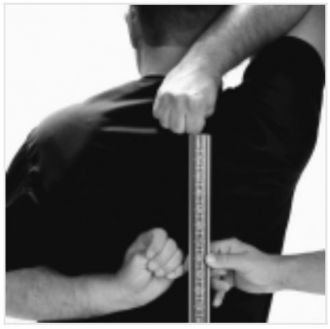How to prevent or mitigate shoulder problems
This article is edited by Professor Diana Tomasi, Professor of Exercise and Sports Sciences, for over 30 years, at the Liceo G. B. Quadri in Vicenza and Head of the middle distance sector of Athletics Vicentina.
–
The shoulder – or rather the scapulo-humeral joint – is the most mobile joint we have, but it has points of fragility due to the anatomy of the human body which, to allow these great degrees of mobility, makes use of several structures that operate in a coordinated way.
The shoulder girdle (clavicle and shoulder blade, but we also consider the humerus connected to the latter) is composed of the claveo-thoracic, claveo-scapular and scapulo-humeral joint. The latter allows for larger movements and works thanks to the joint ligaments, the muscle-tendon complex (rotator cuff) which is the motor of the shoulder and the osteo-cartilage structure of the shoulder. The shoulder ligaments guide the head of the humerus and stabilize it during arm movements, the scapula-thoracic muscles orient the glena by moving the scapula on the rib cage in order to ensure a solid base for joint movements.
The muscles of the rotator cuff are the subscapularis, the supraspinatus, the infraspinosum and the teres minor, but the scapulo-thoracic muscles and those that also insert on the humerus, such as the teres major and deltoid. The displacements of the scapula and consequently of the glenoid cavity where the head of the humerus rests are simplified by the fact that this bone is “free” (it is not anchored to the rib cage or to the vertebral column) but is held in place by the muscular structures that they fit on it.
But why do we sometimes have shoulder pain? The causes can be multiple (instability due to trauma and / or dislocations, tendon calcifications, arthrosis, cuff injuries, scapula humeral stiffness) and it will be the doctor, after diagnostic tests (x-rays, ultrasounds, resonances …) who will determine the cause. If we suffer from a shoulder problem, however, an interesting thing is that it has wide margins of curability, but before that – if there are no problems that have already emerged – it is right to think about prevention.
A healthy lifestyle can keep our shoulders efficient until very late age: we therefore use moderate but constant physical activity to improve posture, keep muscles toned and tissues elastic.
Moreover, a good diet that avoids excesses and the so-called dysmetabolic pathologies from nutritional imbalance, helps to remain healthy and efficient. And for a good and balanced diet, Bivo is always at your side when you need a quick, complete, natural meal that takes away hunger for many hours, releasing the right energy. Use the discount code “IORESTOINFORMA” to be entitled to a 10% discount on your first Bivo order.
Therefore it would be advisable to insert exercises of joint mobility and muscle stretching and elasticity almost daily. We recall in this regard that the shoulders allow the arms to flexion, extension and abduction. These are movements that express a movement of the arms in three directions: anteriorly, posteriorly and laterally.
The degree of joint mobility is not the same for everyone, and is influenced by various factors (age, previous traumatic events, adhesions, stiffness…).
We can start with a simple test to understand the current level of mobility. For example, by clenching the hands into fists and bringing them behind the back as in the following photo, we get a first idea of the mobility of the shoulders. The closer the hands are to each other, the better the mobility.

We repeat the test by reversing the position of the hands (the one that was above passes below and vice versa) to check if there is the same distance. If this were not the case, it means that there is an asymmetry in the mobility of the two limbs. Obviously in addition to this test there are more checks on shoulder mobility that can be done. Those who want to learn more can take a look at the video that follows.
Finally, to maintain or improve the mobility of the shoulders, it is good practice to carry out exercises that work the shoulders at least 3-4 times a week (every other day). We must be careful not to compensate for the movement by “arching” the back, ie avoiding situations of hyperlordosis of the lumbar spine. To do this, for example, you can work while sitting or lying down, obviously depending on the exercise we are going to do. Last warning: never force the movements and if you arrive at a certain point in the joint excursion where you feel a pain or even just a discomfort, go back and in the next repetition of the exercise stop before reaching that point. Remember that pain is a signal, an alarm bell, that our body sends us and that we must never neglect.
In the following video there are some useful exercises for the purpose we set ourselves.
–
Video sources:
Youtube channel “Claudio Negro”
Youtube channel “La Scimmia Yoga”





